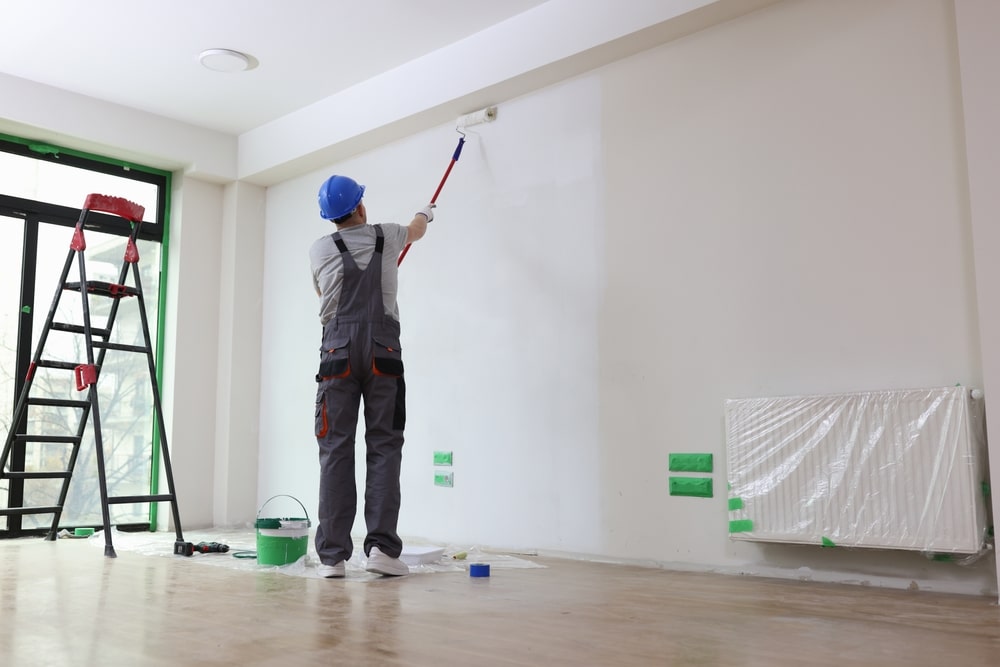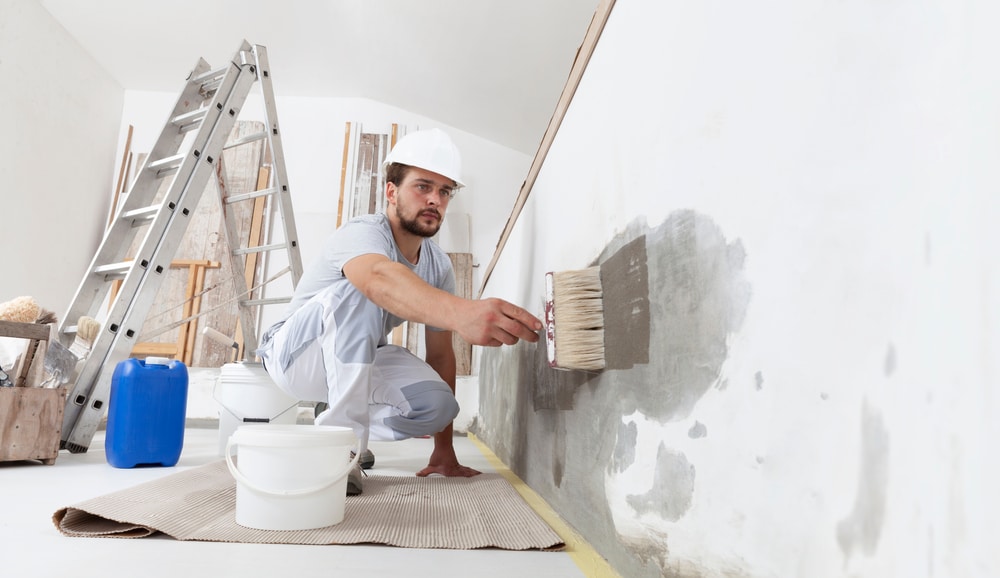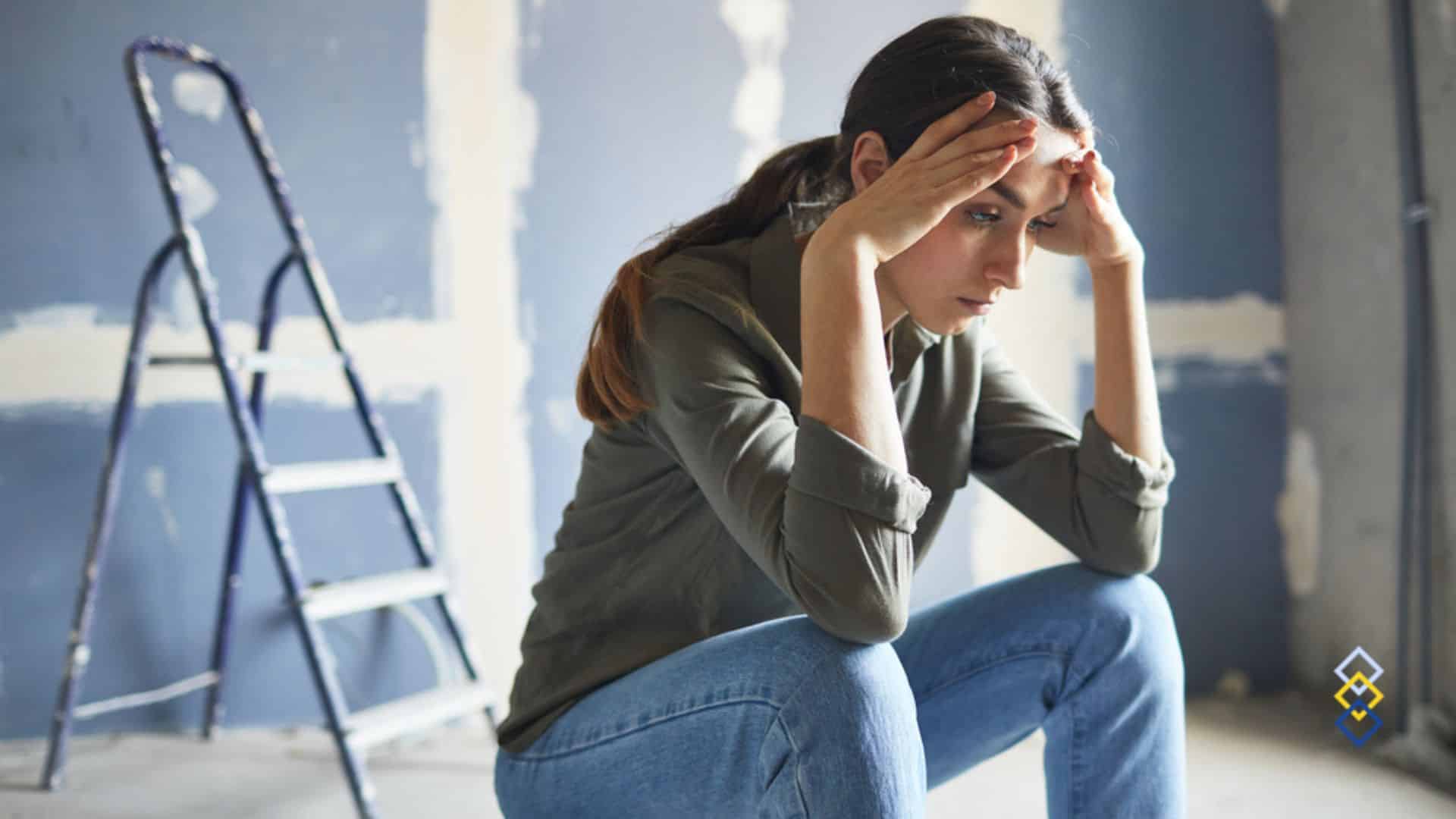Table of Contents
ToggleRolling up your sleeves and tackling a paint job yourself may seem like a smart, budget-friendly move—until it’s not. What begins as a weekend project with a $40 gallon of paint can quickly snowball into a multi-week slog filled with unexpected costs, questionable results, and more stress than you bargained for. These hidden costs of DIY painting—from purchasing all the right tools to fixing common mistakes—can quietly accumulate, often surpassing the cost of simply hiring a pro from the start.
It’s easy to assume that painting yourself versus hiring a painter is a simple cost comparison. One saves money. The other saves time. But the reality is far more nuanced—and often, far more expensive—especially when you factor in what you’re really paying for with DIY.
Between buying tools you’ll only use once, fixing mistakes, stretching the project over multiple weekends, and sacrificing quality for savings, DIY painting comes with hidden costs that most homeowners never anticipate. Meanwhile, hiring a professional painter may seem more expensive upfront, but the long-term value, durability, and peace of mind can more than make up the difference.
Today, we’ll unpack the true costs behind both routes—DIY and professional—so the next time you’re weighing your options, you’ll know exactly what you’re getting into. Whether you’re repainting a single room or giving your entire interior a facelift, understanding what’s behind the price tag could save you far more than just money.
DIY Painting: The Costs You See (and the Ones You Don’t)
At first glance, painting a room yourself seems like a straightforward way to save money. However, the true expenses of DIY painting often extend beyond the initial price tag. Let’s delve into both the visible and hidden costs of DIY painting without professional assistance.
Paint & Materials
While the cost of paint is the most obvious expense, many overlook the additional materials required for a quality finish:
- Paint: Premium paints can range from $30 to $60 per gallon, depending on the brand and finish.
- Tools: Brushes, rollers, trays, painter’s tape, drop cloths, ladders, caulk, filler, sandpaper, and primer are essential. These can collectively add up to $100 or more.
- Quality matters: Opting for cheaper tools might save money upfront but can lead to uneven application and a less durable finish, necessitating earlier repainting.
Time as a Hidden Cost
Time is a valuable resource, and DIY painting can consume more of it than anticipated:
- Extended timelines: A professional painter might complete a room in a day, whereas a DIYer could take two to three times longer, especially when factoring in preparation and multiple coats.
- Opportunity cost: Time spent painting is time away from work, family, or leisure activities. For some, this could translate to lost income or missed opportunities.
Physical Toll
Painting is physically demanding:
- Strain and fatigue: Repetitive motions, bending, and reaching can lead to sore muscles and fatigue.
- Safety risks: Working on ladders or scaffolding introduces the risk of falls or injuries, particularly for those unaccustomed to such tasks.
Real-World Regrets
Real data shows that many homeowners walk away from renovations with second thoughts, and DIY projects are often a key source of frustration:
- According to a recent survey, 74% of homeowners had renovation regrets. Nearly half said they liked their home more before renovating.
- Around 63% of homeowners went into debt to complete their renovations, and 80% went over budget. These financial pressures often compound feelings of regret, especially when cost-saving DIY efforts fall short.
- 36% of those who borrowed for renovations struggled to pay their credit card bills afterward — a sign that DIY decisions made under budget strain can backfire.
- According to real estate agent Geoffrey Hoffman, DIY renovations frequently hurt home value due to poor workmanship:
“New isn’t always better. An older kitchen in good condition is better than a cheaply renovated new kitchen installed with poor workmanship.” - Hoffman also cautions that bad design choices by DIYers are common:
“It’d be better if they left it alone, learned to do it correctly, or hired a professional.”
By considering these factors, it’s evident that DIY painting, while seemingly economical, can entail hidden costs and challenges that may outweigh the benefits.
The Intangible Costs of DIY
DIY painting comes with hidden emotional tolls that are not directly reflected in your budget, but they’ll drain your time, energy, and satisfaction if you’re not ready for them.
Stress & Frustration
Painting sounds simple until you’re halfway through and knee-deep in tools, tape, and second-guessing. The process is slow, repetitive, and mentally exhausting. Most DIYers underestimate how long it will take and how tedious the details will be.
Common frustrations:
- Struggling to get clean lines
- Doubting your color choice mid-project
- Juggling prep, painting, and cleanup without help
It’s less relaxing than you think—and far more stressful than it looks.
Project Creep
You plan for a weekend, but life gets in the way. Suddenly, a “quick job” drags into week three, and that half-painted hallway taunts you daily.
Why it happens:
- You overestimated your availability
- One room turns into three
- The motivation fades faster than the paint dries
Pros finish in days. DIY projects often drag on.
The “It’ll Do” Trap
After hours of work, you’re tired. The edges aren’t perfect. The color’s… okay. But you settle because the thought of redoing it is worse than living with it.
That “good enough” feeling becomes your new normal. But deep down, it bugs you. You live with the flaws instead of fixing them.
A professional finish doesn’t just look better—it feels better. It gives you back your time, your sanity, and your space. DIY might save a few bucks, but peace of mind? That’s priceless.
Painting Yourself vs Hiring a Painter: What’s the Real Cost?

Taking on a painting project yourself might seem like a cost-effective choice, but weighing the pros and cons is essential. Let’s delve into the differences of painting yourself vs hiring a painter, focusing on quality, durability, and return on investment.
The first two quality differences that can add up over time are:
- Durability and finish: Professional painters bring expertise in selecting the right paints for specific rooms, considering factors like moisture, sunlight, and foot traffic. Their meticulous preparation and application techniques ensure a finish that withstands the test of time. They also properly prep surfaces (a step most DIYers skip), which prevents issues like peeling or early wear. In contrast, DIY paint jobs often fade, peel, or yellow faster, usually because of the wrong prep, tools, or product choice.
- Color application: Pros achieve even, professional-looking coverage in fewer coats, which actually saves on materials. They also understand how to use the right finish or sheen for each surface—flat for ceilings, satin for walls, semi-gloss for trim. DIYers often struggle with overworking the paint, choosing the wrong sheen, or accidentally applying coats unevenly, leading to patchy walls and visible roller marks.
In addition to this, hiring a pro isn’t just about the result—it’s a smart investment. According to HomeLight, interior painting offers a 107% return on investment, making it one of the highest-ROI improvements you can make before selling.
That means a well-painted room can add real value to your home, especially if it’s done right. A rushed or amateur finish? Not so much.
When DIY Makes Sense (and When It Definitely Doesn’t)
There’s a time and place for a DIY paint job. But it’s not always the smart choice.
DIY Can Work If…
- You’re tackling a small project (like an accent wall or touch-up)
- You have the tools, the time, and some experience
- Perfection isn’t the goal
But Avoid DIY If…
- You’re prepping to sell or rent
- The walls are damaged or textured
- You’re dealing with mold, high ceilings, or narrow trim
When you factor in the hidden costs of DIY painting—time, materials, redos, and emotional energy—those savings often evaporate fast.
The choice between painting yourself vs hiring a painter isn’t just about who holds the roller—it’s about the long-term impact on your time, your sanity, and your home’s value.
If the stakes are high, the space is large, or the finish really matters, hire the pro. Because fixing a bad paint job later costs more than doing it right the first time.
Contact us here if you would like to find the best painting contractor for your residential or commercial painting needs.
The Real Cost of Hiring a Painter

When considering the cost of hiring a painter, it’s essential to look beyond the upfront expenses. While tackling the project yourself might seem more economical initially, the hidden costs of DIY painting—such as time, effort, and potential mistakes—can add up quickly. Let’s delve into what you’re truly paying for when you hire a professional.
Upfront Investment
When considering painting yourself vs hiring a painter, know that professional painters offer several pricing models depending on the project’s scope and complexity:
- Per Hour: On average, professional painters charge between $20 and $50 per hour, though rates can be higher in metropolitan areas like San Francisco or Washington, D.C.
- Per Square Foot: Interior painting generally costs $1 to $5.50 per square foot, depending on surface type, paint quality, and prep work needed.
- Per Room: DIY painting costs around $200–$300 in materials for a typical room, whereas professional painting for the same room may cost between $400 and $1,500, factoring in labor and materials.
These rates usually include:
- Preparation: Moving or covering furniture, wall repairs, sanding, sealing edges, and priming — especially important for surfaces with imperfections or moisture exposure.
- Materials: High-quality paints with features like low VOCs for better indoor air quality, along with necessary tools and equipment.
- Labor: Skilled, efficient application using proper techniques to ensure durability, smooth finishes, and clean lines, which is especially critical for complex layouts or textured surfaces
- Finishing Touches: Thorough cleanup, touch-ups, and inspections to ensure customer satisfaction.
While professional costs are higher upfront, their experience often leads to better, longer-lasting results and fewer costly mistakes — something many DIYers only realize after a project goes off course.
According to data from the CDC, ladder-related falls send over 500,000 people to the hospital each year, many during home improvement projects like painting.
What You’re Paying For (That DIY Misses)
Hiring a professional ensures:
- Expert Preparation: Proper patching and priming for longevity
- Precision: Clean lines without mess
- Quality Tools: Use of high-end equipment for a superior finish
- Efficiency: Faster completion with guaranteed results
In contrast, DIY projects often lack these advantages, leading to subpar results and potential rework.
Licensing, Insurance, and Peace of Mind
Professional painters come with:
- Liability Coverage: Protection against potential damages—a critical factor when hiring a contractor,
- Workmanship Guarantees: Assurance of quality and durability
These factors provide peace of mind, knowing that your investment is protected.
In general, the costs of fixing DIY mistakes are there, and they are real. Repainting a room or repairing drywall due to errors can quickly escalate expenses. Many homeowners find that hiring a professional from the start would have been more cost-effective than correcting DIY mishaps.
How Can I Reduce the Cost of Painting My House?
Ironically, hiring a pro and not doing it yourself can be more economical in the long run. Professionals can advise on cost-saving measures, such as:
- Color Selection: Choosing shades that require fewer coats
- Efficient Techniques: Minimizing paint waste
- Bulk Discounts: Access to trade pricing on materials
You can achieve a high-quality finish without unnecessary expenses by leveraging their expertise.
In conclusion, while DIY painting might appear budget-friendly, the hidden costs of DIY painting—including time, effort, and potential errors—can outweigh the initial savings.
When evaluating painting yourself versus hiring a painter, consider the long-term value and peace of mind that professionals provide. So, is DIY painting worth it? It depends on your skills and the project’s complexity. However, for many, the answer tends to favor hiring a pro. After all, is professional painting worth it? The quality, efficiency, and assurance it offers often make it a smart investment.
Conclusion: The True But Hidden Costs of DIY Painting

The hidden costs of DIY painting go well beyond a gallon of paint and a weekend’s effort. Time spent prepping and learning on the fly, the money sunk into one-time tools, the physical wear, and the frustration of redoing mistakes all add up fast, and often silently. What feels like savings up front can quickly turn into a costly detour.
Professional painters aren’t just charging for labor; they’re delivering results that last. You get clean lines, a smooth finish, proper prep, and peace of mind that the job’s been done right. No drips on your baseboards. No guessing if you chose the proper primer. No surprise repairs down the line.
That said, not every project needs a pro. If you enjoy the process and you’re working on a small, low-risk space—a guest room, a closet, a quick refresh—DIY might be just fine. But when it comes to high-traffic areas, complex surfaces, or any room where quality really matters, investing in professional help often saves you time, stress, and money in the long run.
Because in the end, paint is more than just color. It’s protection. It’s a presentation. And it’s worth getting right.
Discover the Koehn Painting difference – contact us today for a free estimate and step into a vibrant, freshly painted home!




